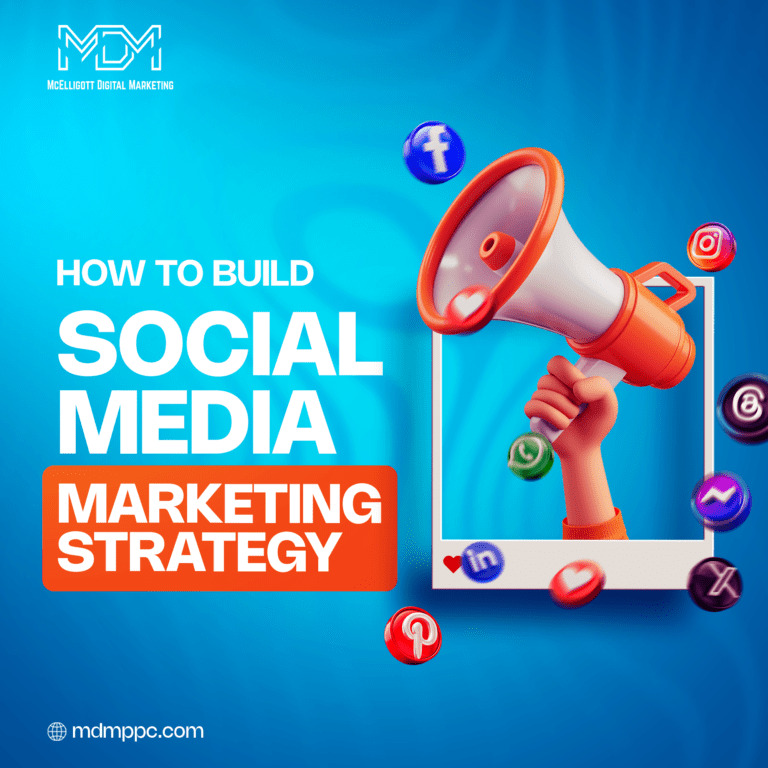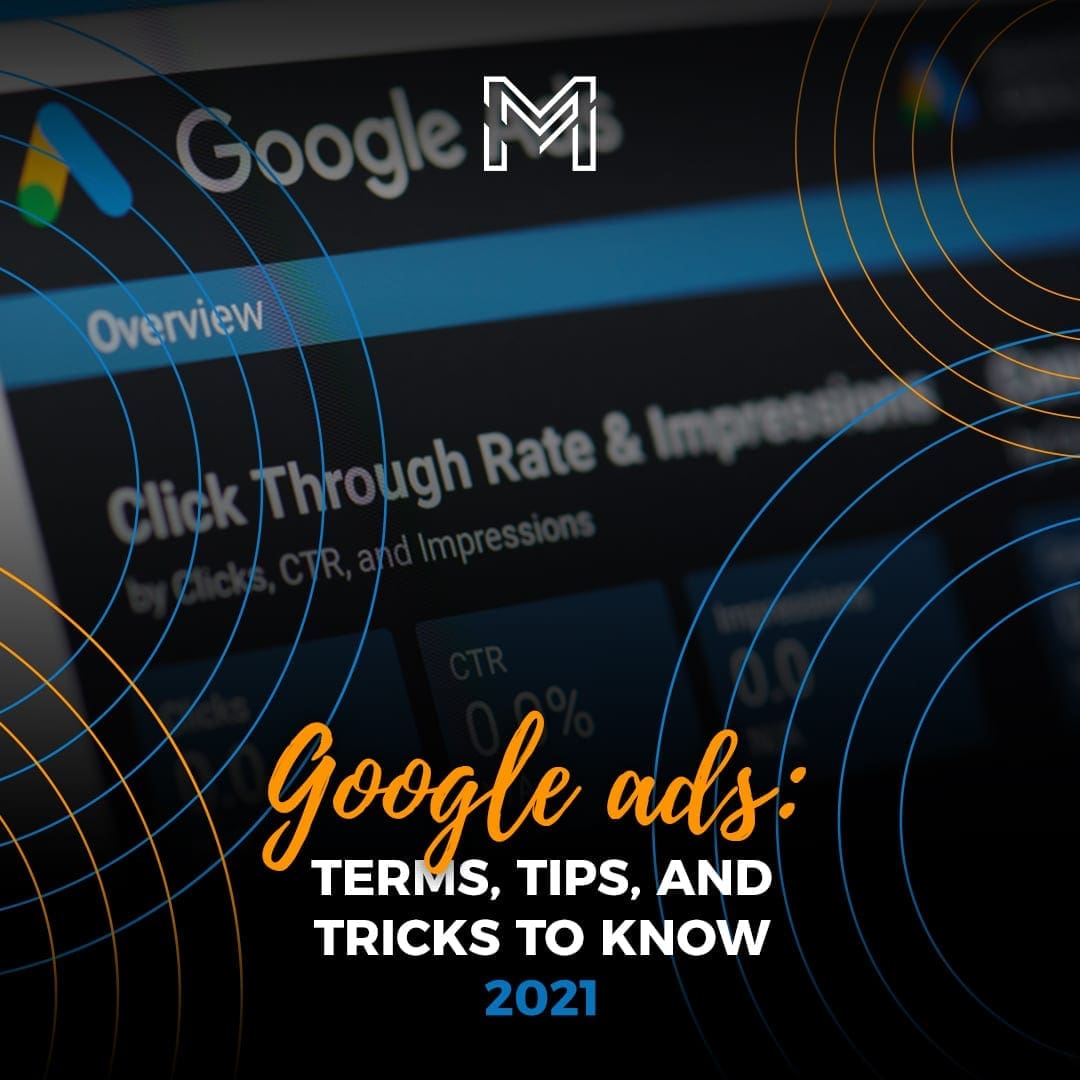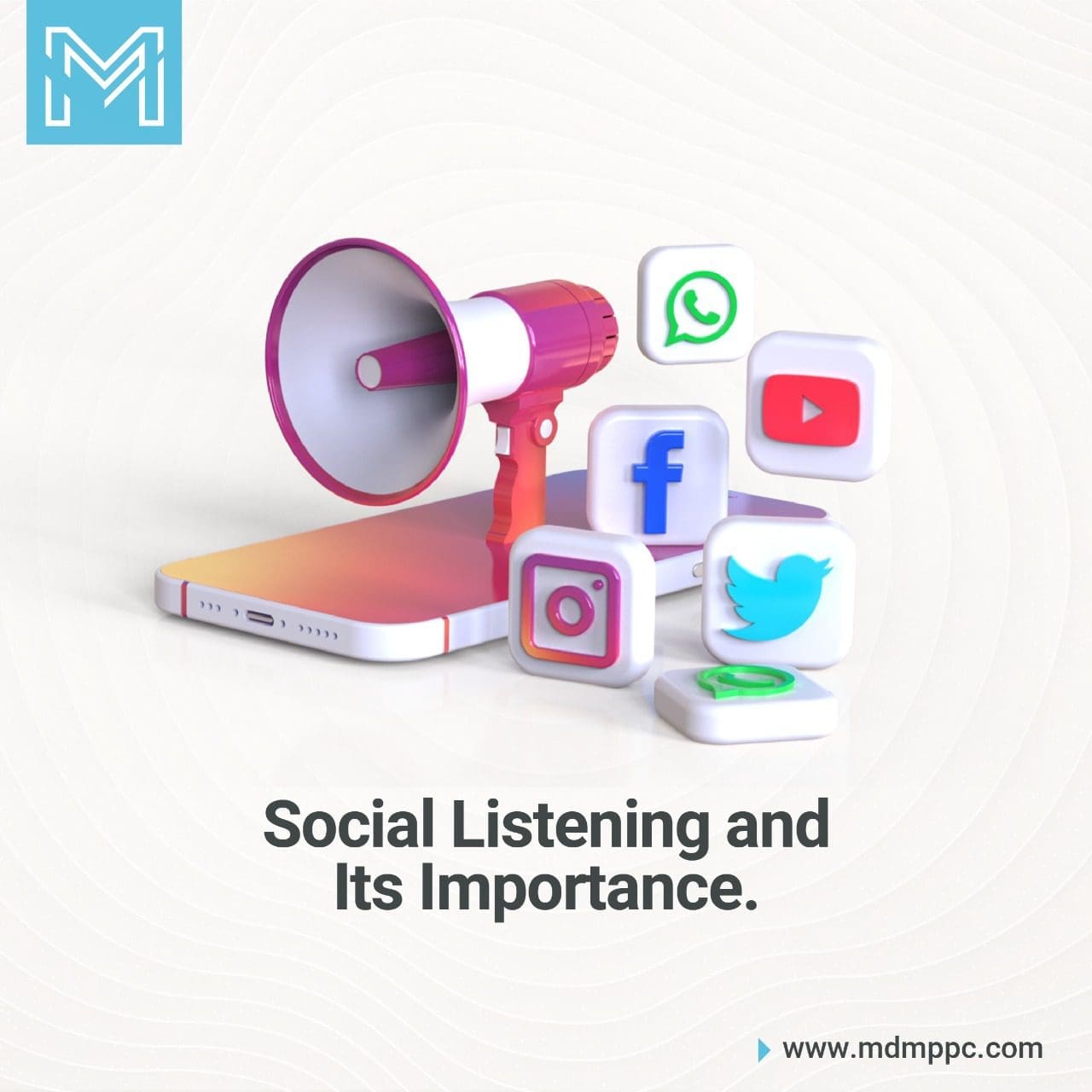Social media marketing isn’t going to be any less important in 2025. There will not be any split changes from last year, but some social media best practices will certainly give your business more brand awareness and digital presence than others.
Social media platforms are a great way to connect with your audience. They help increase brand visibility and drive traffic to your website. However, your efforts can feel random and ineffective without a clear plan. This is why a social media strategy is so important.
Even a simple plan can make a big difference. It helps you identify your target audience. It also guides you in creating and sharing the right type of content. Most importantly, it ensures your content aligns with your business goals.
Here’s a simple guide to creating a social media strategy in 2025.
What is a social media marketing strategy?
In social media marketing, platforms like Instagram, Twitter, and Facebook are used to promote your brand. It helps you sell your products or services.
For example, when you launch a new product and promote it on social media, that is social media marketing. Replying to customer comments is also part of social media marketing. Creating content that reflects your brand’s values and story is another way to do it.
This type of marketing needs specific skills and tools. You also need a clear plan, just like other parts of your marketing strategy.
A social media marketing strategy is a detailed plan. It connects your social media efforts to your team’s goals. It also aligns with your overall business objectives. This ensures that your efforts are organized and produce measurable results.
A strong social media strategy sets clear limits on what your internal marketing team can do. Social media is unique and requires expertise to manage well. Although many people use social media, this doesn’t always mean they are social media marketing experts. That’s why businesses often work with digital marketing companies that are experts at social media marketing, copywriting, and online advertising.
Why is it important to have a social media marketing strategy?
A social media marketing strategy helps companies stay organized, consistent, and focused on their goals. Here’s why having a strategy is so important,
1. Increased brand awareness
A clear strategy helps you post consistently and share a clear message. Regularly sharing valuable content keeps your brand visible to more people. When customers see the brand often, they recognize and remember it. Over time, this builds trust and loyalty.
2. Boost website traffic
Social media is a powerful way to bring visitors to your website. Sharing links to blog posts, product pages, and offers makes people click and explore your website. A good strategy helps businesses plan posts for the best times. This increases the chances of attracting more visitors.
3. Improved customer engagement
Social media allows you to talk directly with your customers. Replying to comments, answering questions, and joining conversations make customers feel valued. A planned approach helps businesses stay consistent in their interactions. This builds stronger relationships and increases customer loyalty.
4. Better conversion rates
A strategy helps businesses create content that attracts the right audience. Sharing content that solves problems or meets needs encourages customers to take action. Using clear calls-to-action (CTAs) also improves the chances of turning visitors into buyers.
5. Targeted advertising
Social media platforms let you target specific groups of people. You can show ads to users based on their age, interests, or habits. A strategy helps businesses decide who to target and what messages to use. This makes ads more effective and reduces wasted spending.
6. Customer insights
Social media provides data about customer behavior and preferences. Analytics tools show which posts work best and what people like. A strategy helps businesses use this data to improve their content and stay ahead of competitors.
How to create a social media marketing strategy?
1. Define your goals and key performance indicators (KPIs)
Planning a social media strategy begins with setting clear goals. Think about what you want to achieve. Do you want to grow your audience, build a stronger community, or expand your team? Defining your goals is the first step to success.
Here are a few examples of social media goals.
- Increase brand awareness
- Bring more visitors to your website
- Get more leads
- Grow your audience
- Increase engagement with your posts
Your goals will guide your strategy and help you measure success. Avoid general goals like ‘gaining more followers’. Instead, set specific goals. For example, aim to increase your followers by 5% every month or reach 1,000 followers by a specific date.
Create SMART goals
SMART goals make your planning easier and more effective. SMART stands for-
- Specific– Clearly defined and focused goals.
- Measurable– Goals you can track with numbers.
- Achievable– Goals that are realistic and within reach.
- Relevant– Goals connected to your business needs.
- Time-bound– Goals with a deadline.
SMART goals help you stay organized and focused. They also increase the chances of success by giving you a clear plan and timeline to follow.
It is important to track your progress. Match your goals with specific metrics to measure success. This will help you see what’s working and where you need to improve.
Important metrics to track
- Reach-The number of people who see your content.
- Engagement– The number of likes, comments, or shares your posts get.
- Sentiment– How people feel about your brand, measured by feedback or tools.
- Views– The total times people view your content.
- Follower count– The number of new followers you gain.
- Impressions– How many times your content is shown to users?
- Clicks– The number of times people click on your website or link.
- Brand mentions– How often people mention your brand online.
- Conversion rate: The percentage of people who take a desired action, like making a purchase or signing up.
Tracking these metrics helps you understand your performance. It shows what is working well and where you need to adjust your strategy.
Also read: How to overcome low conversion rates?
2. Understand your target audience
A good social media strategy starts with understanding your audience. Social media platforms give you basic details about your followers. But to really know your customers, you need to dig deeper. This takes time, but it’s worth it.
First, research your customers. Look at both demographic data (like age and location) and psychographic data (like interests and values). This will help you shape your brand’s voice and tone.
Here are some ways to learn more about your audience.
Surveys– Ask questions about age, location, and interests.
Interviews– Talk to your customers to understand their challenges and goals.
Competitor research– Look at who follows your competitors. See what kind of content they engage with.
Support tickets– Check with your customer service team to find common issues customers face.
Analytics– Use social media insights to learn about your followers’ demographics.
Once you’ve gathered all this information, create customer personas. These are profiles that represent different types of customers. They should include both demographic details and personal interests. This helps you create content that speaks directly to your audience.
3. Competitor analysis
A competitive analysis helps you see what your competitors are doing well on social media. It also shows where your brand stands in the market. This can inspire you, but remember to make your content unique.
Here’s how to do a competitor analysis.
- Identify your top five competitors. These could be brands with similar products, a similar audience, or in the same market.
- Find out which social media platforms they use. See how they use them. For example, do they post a lot of Instagram Stories?
- Look at their best-performing posts. Take note of what type of content they share. This can give you ideas for your posts.
- Use social media listening tools to keep track of what your competitors are doing.
- Check your competitors every few months. This helps you stay updated on trends and improve your social media strategy.
4. Choose the right networks
A social media content audit helps you find out the platforms working best for your goals. Focus on the platforms where you can succeed. Trying to be everywhere can spread you too thin. Being great on two or three platforms is better than being inconsistent on many.
When choosing the right platforms for your brand, consider-
- Where your target audience spends their time
- What your business goals are
- Which platforms help promote your products
- Where your content gets the most attention
- Here are some popular platforms to think about:
Twitter– This platform is simple and easy to use. It helps you connect with followers directly. It’s good for learning basic social media skills like hashtags and brand voice. Many brands use X for customer service.
Facebook– Facebook is great for local businesses. It helps build a local community. You can get reviews, do check-ins, and use ads to reach people.
Instagram– Instagram is all about photos and videos. It’s great for businesses that want to showcase products in creative ways.
Threads– Threads was launched by Meta in 2023. It’s a text-based platform that connects with Instagram. It’s easy to use if you already have an Instagram account.
LinkedIn– LinkedIn is best for business networking. It’s helpful for B2B marketing and finding leads.
Pinterest– Pinterest is popular with younger audiences. It’s a visual platform. People use it to find inspiration and products to buy.
TikTok– TikTok is one of the most popular apps. It’s known for viral trends. It helps brands connect with customers through short, fun videos.
Also read: Facebook Ads vs Google Ads: Which is better?
5. Develop a content strategy and content calendar
Create a simple content plan for each social media platform. Think about your audience and what they like. Your plan should include ideas for all types of customers. Sharing different content on each platform will encourage followers to engage with you on multiple channels.
Find content ideas
Here are some ways to get content ideas-
- Answer customer questions or share their feedback.
- Look at customer support tickets to find common concerns.
- Use trending topics and add your unique touch.
- Check hashtags to see what’s popular.
- Share customer reviews or create short guides for your products.
Create a content mix
Plan regular content types for variety and consistency. For example, share customer stories every week, and post useful tips regularly.
Include different content formats like-
- Educational posts, product demos, and reviews.
- Behind-the-scenes updates to build trust.
- Contests, Q&A sessions, and repurposed blog posts.
Set a schedule for posting. Start small, even if it’s just a few posts each week. Increase gradually as you see what works. Adjust your posting frequency for each platform based on what works best there.
6. Customer service
People often use social media to connect with brands. They ask questions or seek help. This has made social media a popular platform for customer service.
Platforms like Facebook and X are great for answering customer queries. Here are some ideas for your customer service plan:
- Use an automated chatbot to answer frequently asked questions. Facebook has a built-in tool for this.
- Set aside specific times each week to reply to customer questions.
- Direct customers from social media to the help pages on your website.
These steps can make supporting customers easier.
7. Social media ads
Getting started on social media can be challenging because initially, businesses struggle to get likes or engagement on posts. But social media advertising helps you grow faster. It gives your accounts a boost and increases your visibility.
Most platforms offer targeted advertising options. You can choose exactly who you want to reach. For example, working moms aged 25 to 40 or yoga lovers in New York.
Here are some advertising options-
Instagram stories ads– Appear naturally as users scroll through Stories.
Instagram feed ads– Direct users to your website or offer special deals.
YouTube in-stream ads– Show your ads before, during, or after videos.
TikTok ads– Blend into users’ personalized feeds and grab their attention.
Social media ads are a great way to connect with your audience and grow your brand.
8. Monitor and analyze performance
Use social media analytics tools to check how your content and campaigns are performing. Track important metrics like reach, engagement, click-through rate (CTR), and conversions.
Focus on metrics that match your goals. If you want more website traffic, track click-through rates. If your goal is to increase sales, focus on conversions. Checking these metrics regularly helps you make small changes to your strategy. This way, you can improve without making big, risky adjustments. Use these insights to plan better campaigns in the future.
Conclusion
It’s important to develop a social media marketing strategy for your business. It gives you direction to put efforts on platforms like Instagram, Twitter, Facebook, and TikTok.
Having a marketing strategy in place helps you determine the content your audience loves, and the changes to make. It helps you build your brand awareness, get more audience, and engagement, get qualified leads, and increase revenue.
When you’re focusing on your business, having a digital partner to take care of your overall marketing needs is a great asset. McElligott Digital Marketing is one such digital asset for businesses of multiple sizes.
Get a FREE consultation with our social media marketing experts at (833) 772-4897.
Social media marketing FAQs
1. Which social media platforms should I focus on?
Focus on platforms where your audience spends the most time. Check what platforms your competitors use and pick ones that fit your content style.
2. What type of content should I create?
Post different types of content like-
- Educational posts
- Videos
- Customer-created content
- News updates
- Polls
- Promotions
- Inspirational posts
3. How can I measure if my strategy is working?
Use the analytics tools on each platform or a combined tool. Track these important numbers.
- Reach (how many people saw your posts)
- Conversions (how many people bought something)
- Click-throughs (how many people clicked links)
- Engagement (likes, shares, and comments)
4. Should I use paid social media ads?
Yes, if you have the budget. Paid ads help you reach new people and grow your brand faster.
5. How can I connect with my audience?
Ask questions. Reply to the comments of your audience. Join trending conversations. Share customer content.
6. What makes a social media plan successful?
Set clear goals, know your audience well, and plan your posts. Study your competitors and pick platforms that match your business.





